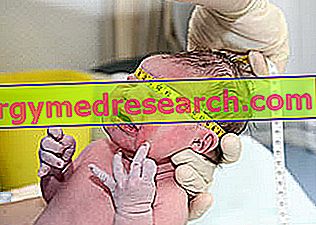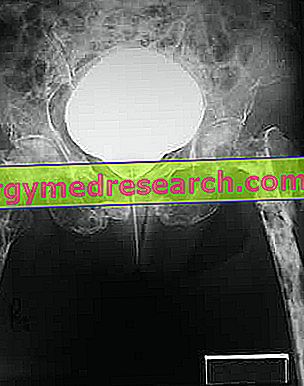By Dr. Luca Franzon
Introduction
I think it is right for a fitness professional to be able to evaluate the state of health of the users, and to do so knowing how to read the reports of the blood tests that fitness practitioners often carry with them when they are gym membership.

It is clear that the instructor is not a doctor, and that he absolutely must not make a diagnosis or allow himself to advise strange alchemies which would then prove to be unhealthy for those attending the gym.
My intention is to take a look at the various items that are usually found in the most common blood tests and to explain their meaning. Those who practice physical activity should take blood tests at least once a year to see how their body is working and eventually intervene on a medical level if something goes wrong. I will not deliberately put the reference indexes in the values that I will explain because I consider them useless for at least two reasons, first we must not make a diagnosis, second, at any age, depending on the pathology that may be present, depending on the type of training and nutrition to which you are submitting there are variations, so giving reference values instead of making things clear would complicate things. For a rational description, I take as a guideline in the blood chemistry tests that my sports doctor advises me to do every 6 months, the dysmetabolism profile C.
blood count
It is the most performed blood test. It is used to count the number of red blood cells (erythrocytes), white blood cells (leukocytes), platelets (thrombocytes) and hemoglobin. With the number of white blood cells, the laboratory usually also provides the percentage of each type of white blood cell (neutrophilic, eosinophilic and basophilic granulocytes, monocytes, lymphocytes). It is also called hemochromocytometric which literally means "measurement of the color of the blood and the number of its cells, that is of the globules".
Now let's see what are the subheadings of the blood count.
RED BLOOD CELLS
or erythrocytes, are cells that carry oxygen and carbon dioxide.
WHITE BLOOD CELLS
also called leukocytes. There are different types: basophils, eosinophils, lymphocytes, monocytes, neutrophils. Their function is to defend the body against infections. The examination that shows the percentage of different white blood cells present in the blood is called the leukocyte formula .
NEUTROPHILS
They belong to the series of white blood cells and represent the most numerous class; generally they increase in bacterial infections.
LYMPHOCYTES
Cells belonging to a group of white blood cells of essential importance for the functionality of the body's immune system; generally increase in viral infections.
MONOCYTES
they are large blood cells, larger than the other leukocytes.
EOSINOPHILS
is a variety of white blood cells; generally they increase in the presence of allergies or in parasitic infestation.
BASOPHILS
One of the forms of white blood cells or leukocytes.
PLATES
They are the smallest figurative elements of the blood that contribute to coagulation; aggregating together in particular situations (trauma, wounds, bleeding) block bleeding. Their aggregation is an unfavorable phenomenon when it tends to occur under normal conditions, because it can lead to thrombosis. Their decrease causes haemostatic alterations with lengthening of the bleeding time.
HEMOGLOBIN
Protein, the main constituent of red blood cells, used mainly to transport oxygen from the lungs to the tissues; on its return journey in the venous blood the hemoglobin instead transports carbon dioxide to the lungs from which it is expelled with the exhaled air. Its formation occurs in the bone marrow simultaneously with that of immature erythrocytes.
HEMATOCRIT
Examination that measures the percentage of red blood cells compared to the liquid fraction of the blood; his abbreviation is HMT.
MCV
It is the average corpuscular volume of red blood cells.
VES
Abbreviation for "sediment eritro speed"; in practice it calculates the time necessary for the solid part of the blood (red blood cells) to separate from the liquid part (plasma).
These are not very precise values since the ESR can be normal even if the infection is already in place, or it can be high when you have already healed, so it is more than ever necessary to consult a doctor.
Fibrinogen
Protein substance that intervenes with other coagulation factors to favor blood coagulation, as it turns into fibrin.
GLYCEMIA
Indicates the concentration in the blood of glucose, sugar originating from the metabolism of glycogen, amino acids and fats introduced with food.
TRANSAMINSAI GOT or AST
A very important enzyme, it is called "glutamic-oxaloacetic transaminase" which is called GOT or AST (aspartate transferase). It is present in the liver and is analyzed to study the hepatic conditions, the cardiac conditions and also those related to the alterations of those muscles that coordinate the movements of the skeleton.
TRANSAMINASI GPT or ALT
Very important enzyme present in the liver. It is called "glutamic pyruvic transaminase", in the abbreviation GPT or ALT (alanino amino transferase); its values give the exact evaluation of the severity of the alteration of the liver.
ALKALINE PHOSPHATASE
It is a dosable enzyme in the blood, produced by the intestine, the liver, bones and placenta; it is found in the bile ducts. Its dosage is performed to establish, in a particular way, possible pathologies of the bone.
crEATInInE
It is a component of the blood that is eliminated with urine; it signals the function of the kidney as it is eliminated by the kidneys themselves through urine. If the presence of creatinine in the blood is too high, this means that the kidneys cannot pass it into the urine, so they do not do their job well. A diet that infuses large amounts of meat can raise this value.
URIC ACID
The presence of uric acid in the blood is called uricemia. It is a waste product of protein metabolism and should be excreted from the body, through the kidneys, into urine. If this does not happen, the rate of uric acid increases in the blood. See: diet and gout.
TOTAL BILIRUBIN
It is a pigment contained in the bile of man. It is reformed following the demolition of hemoglobin belonging to the red cells dismantled at the end of their life. It is transported by the blood to the liver, which transforms it to make it soluble in water. It is divided into direct bilirubin (already formed by the liver) and indirect (not yet "worked" by the liver). If the liver becomes ill or excess red blood cells are destroyed the bilirubin increases.
TOTAL CHOLESTEROL
It's a fat; important constituent of the body's cells. It may be of food origin, but most is made from the liver from a wide range of substances. The research of this substance in the blood contributes, with the research of triglycerides, to evaluate the lipemic state of the organism. It can be eliminated (through the synthesis of bile acids) by hepatic (liver) or intestinal route. It is differentiated into two groups:
- HDL cholesterol (High Density Lipoproteins, HDL) which appears to have a protective effect against arterial disease, because high-density proteins having a very large structure as they pass into the arteries act as scavengers of the same, clearing them of arteriosclerotic deposits.
- Cholesterol (Low Density Lipoproteins, LDL) increases the risk of developing atherosclerosis.
TRIGLYCERIDES
They are fatty substances produced in the liver or introduced with food. Along with the increase in cholesterol, the increase in triglycerides is a risk factor because it damages the arteries and increases the risks of cardiovascular diseases.
ALBUMIN
It is a protein produced in the liver; it has many functions, but the most important is to keep the level of fluids in the blood vessels constant; when the levels are low the liquids spread into the tissues, causing swelling.
GLOBULINE RANGE
Globulins that have the function of antibodies. They are divided into 5 different classes: IgG, IgA, IgM, IgD, IgE.
FERRITIN
Indicates the iron present at the level of the liver, ie the iron reserve.
The hope is to have given a guideline to not be thrilled before a medical report of a blood chemistry evaluation, without removing anything clearly from the doctor who is in charge of the diagnosis, and who I consider an irreplaceable figure with which to collaborate in various situations, in a way to be able to train users in a healthy and profitable way.



